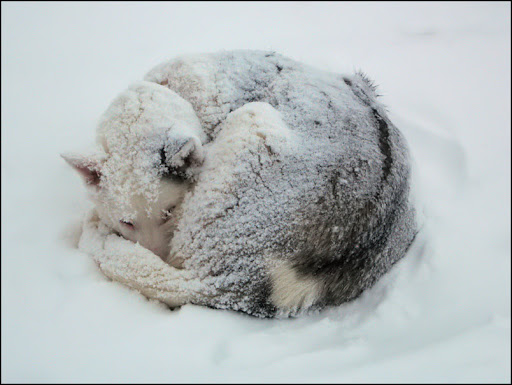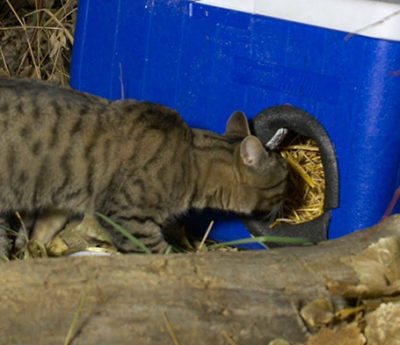Cold Weather and Your Dog

When we go to different remote communities we are amazed by the variety of dog breeds and types we see. Everything from Chihuahuas to Huskys! When considering the safety of your dogs safety as we head into the colder weather and winter, being aware of the dangers is important.
Heavy coated, northern breed dogs have evolved genetically to be much more tolerant of cold weather. They have very thick undercoats, shorter ears for retaining heat and reducing risk of frostbite, and bushy tails to wrap over their face while they sleep. The thick undercoat is like a sweater that keeps the warmth next to the body rather than allowing it to escape. There are many mixed breeds that have some husky type in them but also a shorter coated breed mixed in. They may look husky like but they may not be able to tolerate the cold. So, how tolerant of the cold is your individual dog? A dog’s ability to tolerate really cold weather, no matter what breed, depends on many factors:
- what they are fed – high fat, high protein, high calorie food helps, splitting up meals into more frequent feedings in a day helps as well
- their age – puppies and seniors are at risk
- their general health – if they are not well they are more at risk
- their weight- if they are skinny they are more at risk
- the thickness of their coat – some breeds have a thick undercoat (double coat) which protects them better
If it is too cold for you to be outside for long, it is too cold for many dogs. However, in many of our communities, we do know that dogs live outside all year. Short coated dogs simply cannot tolerate outdoor living, they need shelter. Cold rain, sleet, wet heavy snow, strong wind chill, etc. can all very strongly affect even a thicker coated dogs ability to survive outside. Shelter from the wind and wet and extreme cold is incredibly important. Dogs can suffer from hypothermia (a condition where the body temperature falls below normal and as it progresses they will die from it). They can also suffer from frostbite, especially on ears, paws, tail tips, etc.
In the far North, you will often see Northern breed dogs curled up tight, sleeping in the snow (like the dog in the picture above). If the snow is not melted on their coat, it actually indicates that they are holding their heat well. If the snow is melting or the dog has ICE on their fur, they are not doing well, they are losing enough body heat to melt the snow. There are other signs to watch for to indicate if your dog is getting too cold…
- if your dog has balls of snow or ice stuck between his pads of his feet, these are uncomfortable and they are too cold
- if your dog does not want to move around
- if your dog is shivering – just like us a dog will shiver when they are cold
- if your dog is acting differently than normal, more needy, it can be a sign that he is trying to tell you something is wrong
- holding up a paw or suddenly limping when they try to walk indicates their feet are getting too cold
- if you are not comfortable outside for long periods of time in the current weather, your dog likely isn’t either (unless he has a very well insulated dog house and is a northern type of breed that can tolerate the cold better).
Check in with our next CAAT Community Corner for hints on how to keep dogs that do live outside safe.






